Left or Right? Is there a difference?
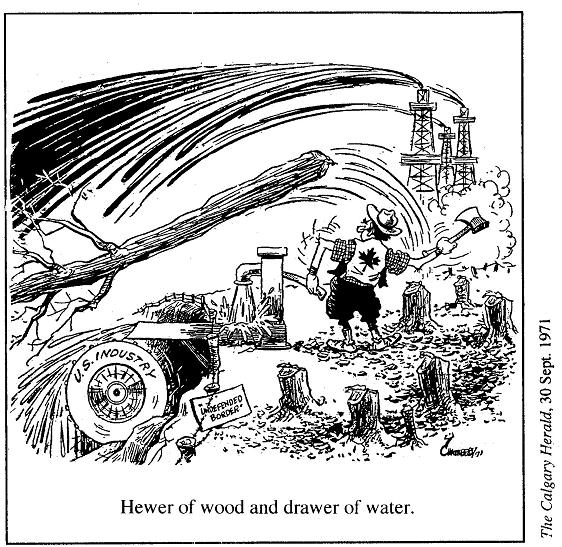
This post will tackle the issue of ‘fiscal conservatism’ and whether it still lives, or more to the point, whether it ever lived in actual practice. Of specific interest, is the management of natural resources in Alberta and British Columbia. I will later write about Newfoundland and Labrador, as NFLD and Alberta have followed almost the same path over the past twenty years (boom to bust). Just where does the fault lie?
In the following discussion, it’s suggested I lean more heavily on Alberta than British Columbia and to some extent that’s true. Part of my reasoning is that over the past forty years BC has developed strong political and public opposition to the worst instincts of government when it comes to extracting value from our resources, and with protecting the environment for future generations.
With the Conservatives now back in power in Alberta, they are again in a position to spend hundreds of millions to protect the oil companies and government from any opposition in a rapidly changing world. This is not unexpected, as over the past seventy-six years, Alberta, the most conservative province in Canada, has had neither an effective opposition nor a protest movement.
It was only in 2015, with the election of the NDP, that this changed. While the NDP was defeated this year, I think the future will be far different as there will be a rapid rise in opposition strength and it seems likely public protest will also take hold. Many articles have been written which suggest Alberta has become far more polarized (left and right) in recent years and that bodes well for the people of Alberta and Canada as the Conservatives will need to think twice about running roughshod over any opposition. (Link)
Regards,
Harold McNeill
Email: lowerislandsoccer@shaw.ca
Related Posts
Is Fiscal Conservatism Dead
Left or Right: Is there a difference?
How to Game an Election
The SNC Lavalin Affair
The Kings of Conservative Media
The Changing Landscape of Politics in Canada
Contents
1. Introduction
2. The ABBC of economic free rein: What happens when few controls are placed on how companies use our natural resources for a quick buck.
3. For richer, for poorer, in sickness and in health: life in the Alberta oilpatch (1940 – 2019).
4. British Columbia: The Scars that Bind (1952 – 2019)
5. Back to the Future
Footnotes and Charts
Appendix A (a sketch of the federal political parties)
Next Up: How the past twenty years in NFLD almost exactly parallels the rise and fall of fortunes in Alberta with, “Oh, Danny Boy, the Pipes, the Pipes are Calling.” (Coming soon).
1. Introduction
With the Conservatives and Liberals in a virtual tie, the following seat projections are taken from a ten poll average on October 9, 2019. Does it make a difference who wins? While some people say no, politicians are 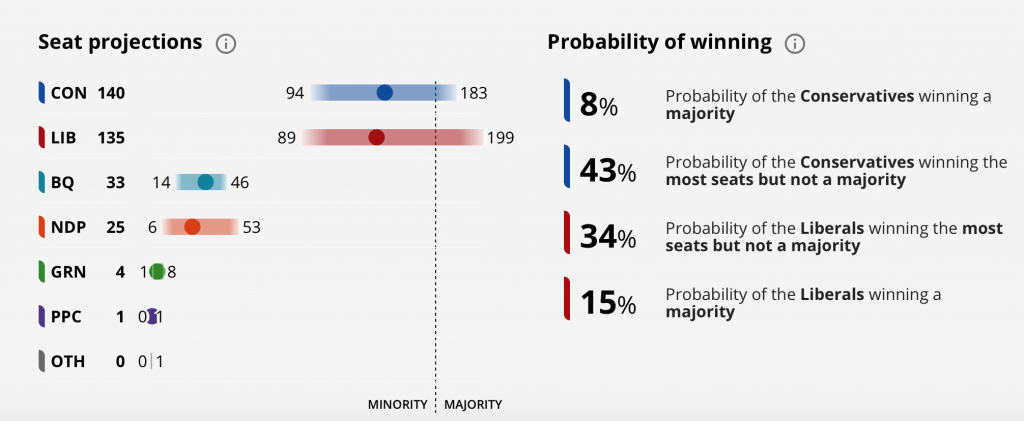 politicians, for the vast majority, it does make a difference. Where the difference arises is with the basic governing policies of the left and right. At present, 60% of Canadians lean to the left, 40% to the right. The BQ is a toss-up as it originated as a combination of left and right, with their present position being decidedly right. They are also restricted to the particular interests of one Province. Where do the other parties sit on the interests of one Province? Jason Kenny (Alberta), has even gone so far as to suggest if the Liberals stay in Ottawa, Alberta may need to reconsider its position in Canada.
politicians, for the vast majority, it does make a difference. Where the difference arises is with the basic governing policies of the left and right. At present, 60% of Canadians lean to the left, 40% to the right. The BQ is a toss-up as it originated as a combination of left and right, with their present position being decidedly right. They are also restricted to the particular interests of one Province. Where do the other parties sit on the interests of one Province? Jason Kenny (Alberta), has even gone so far as to suggest if the Liberals stay in Ottawa, Alberta may need to reconsider its position in Canada.
While climate change sits near the top of public concerns for most Canadians (footnotes 2), it’s hard to gain traction as people tend to want more benefits and that doesn’t square with tackling climate change. Also, every party is forced to makes promises, many of which they won’t be able to keep, simply because we as voters demand gifts for giving them our vote. Whether it involves tax cuts or new programs, the race to assist average Canadians is going to cost money, and that’s going to add to the deficit and that’s going to make our fight on the climate front more difficult. Let’s take a walk through the history of Alberta (AB) and British Columbia (BC).
2. The ABBC’s of economic free rein
We recently watched logging trucks as they converged in downtown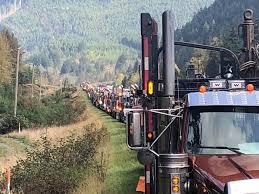 Vancouver in protest of the closure of dozens of sawmills across BC. If you look at the history of logging in BC, the resource was managed in much the same manner as oil in Alberta. Whether you cut it or pump it, it was all sold for a quick buck with no plan for the future. That’s what happens when you have a form of free enterprise in which the government sets aside social interest in favour of business and short term economic interests.
Vancouver in protest of the closure of dozens of sawmills across BC. If you look at the history of logging in BC, the resource was managed in much the same manner as oil in Alberta. Whether you cut it or pump it, it was all sold for a quick buck with no plan for the future. That’s what happens when you have a form of free enterprise in which the government sets aside social interest in favour of business and short term economic interests.
On a recent trip to Edmonton, I heard plenty of complaints about how bad it is in the oilpatch. Jobs lost, people losing their homes and fingers pointed at other governments for having created the problem. I don’t think it’s that bad, but, hey, some Albertans love to complain about their lot. Much of the blame was placed squarely on the shoulders of the Notley NDP, with plenty of words left over for the NDP and Greens in British Columbia and the Liberals in Ottawa.
But what about the Conservatives in Alberta who had exclusive control over the economy for so many decades? Does the Alberta Conservative Party not “…stand on the fiscal right, for lowering taxes and for generally allowing companies more free reign to operate in Canada (Appendix A(4))? Why is that aid even necessary in what is (or was) arguably the richest Province in Canada, perhaps the world?
While some Canadians think the purchase of the Trans Mountain by the Feds was a stupid idea, it’s hard to understand why Albertans think
that way. That pipeline, at a cost $4.5 billion, was a gift to the people of Alberta from the people of Canada. But, you may ask, why didn’t 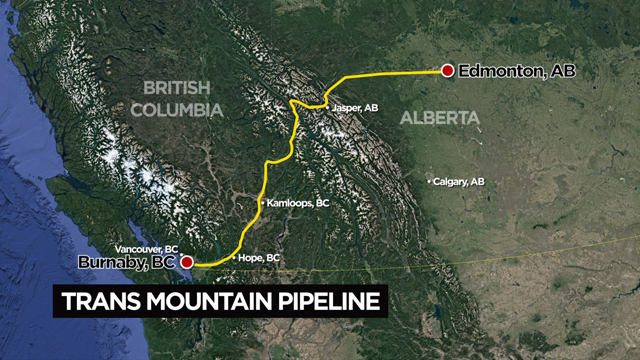 Alberta build that pipeline ten or fifteen years ago when they had Conservative governments in Ottawa and BC?
Alberta build that pipeline ten or fifteen years ago when they had Conservative governments in Ottawa and BC?
As for higher gas pump prices in B.C., I thought that’s what Alberta wanted? We should all be paying far higher costs for gas if we have any interest in changing our consumption habits. But no, we all want lower prices with Alberta making out the price in BC as a negative. Do you suppose all the challenges in the British Columbia and Alberta arose because of the Liberals in Ottawa, or the NDP and Greens in BC? Let’s take a look at the history.
3. For richer, for poorer, in sickness and in health: life in the Alberta oilpatch (1940 – 2019)
Most would agree Alberta and British Columbia are among the most resource-rich Provinces in Canada, perhaps the world. While Alberta is largely limited to oil and agriculture, BC is more diversified in having forestry, mining, fishing, as well as a significant amount of natural gas and, importantly, it has world-class port facilities largely gifted to the province by our location on the map.
Let’s first travel to Alberta to see how their resources were managed over the past eighty years, and starting with a few words about agriculture. Alberta has an absolutely rich resource in agricultural, a natural phenomenon that helped to build and sustain the Province from the earliest years. Yet, agriculture, over the past 80 years, became a poor second cousin to oil. Across Alberta and the country for that matter, farmers constantly struggle to make ends meet and even when they speak of the challenges, their voices are seldom heard through the white noise of oil. Why? Because farming did not and does not provide an abundance of quick riches as is available in oil, gas, lumber, fishing, mining, or hydroelectric.
For Alberta, the oil of those early years was readily accessible, of high quality, and it was relatively easy to reap the benefits without incurring a great deal of development cost (3). Dig an oil well, put in a pump and start the flow through a pipeline to have it refined in another province, state, or country(5).
“In 2014, approximately 15% of Alberta’s total oil production (i.e., both crude and sands-derived oil) was used by refineries within the province. During the same year, 11% was delivered to refineries in other parts of Canada, and 74% was exported to U.S. markets. Only 0.1% was exported to other countries.”
“For many decades, conventional crude oil comprised the majority of Alberta’s oil production. However, with the exception of the odd blip, Alberta’s crude oil production has been steadily declining since 1974. In 2014, Alberta produced on average 590,000 barrels per day of crude oil. By contrast, production from Alberta’s oil sands (i.e., bitumen) has increased over the past few decades. In 2014, Alberta produced roughly 2.2 million barrels per day of bitumen.”
Because of all those years of easy access to quick money, the current fall in oil prices, 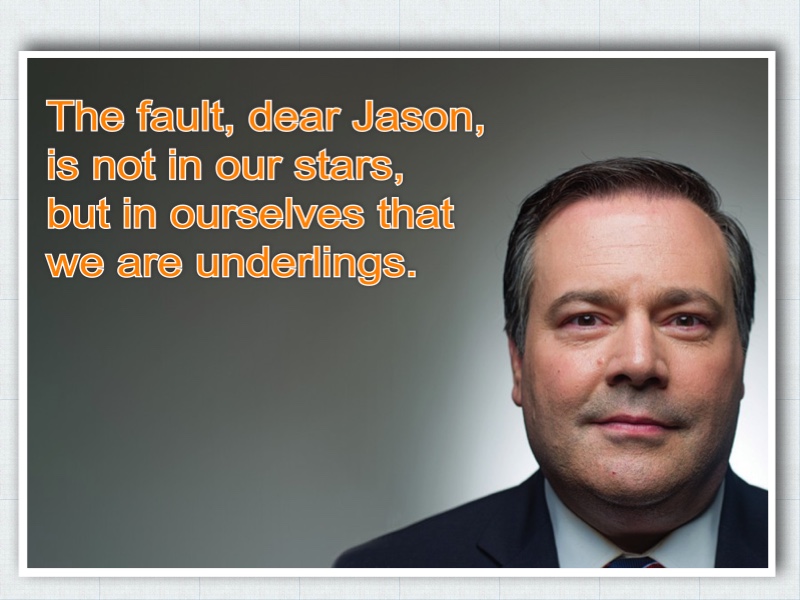 particularly bitumen, places Alberta in a difficult position. What will they do with that bitumen? For a Province with the lion’s share of oil reserves, why have they have invested only minimal amounts in refining facilities? More to the point, in today’s world, fewer and fewer nations are interested in their bitumen as it is considered ‘dirty’ and, therefore, sells at ten cents on the dollar (4). William Shakespeare might have penned a few words on the subject as noted in the above meme. My nephew, who worked for years surveying in the oil fields of Northern Alberta, used a few more words.
particularly bitumen, places Alberta in a difficult position. What will they do with that bitumen? For a Province with the lion’s share of oil reserves, why have they have invested only minimal amounts in refining facilities? More to the point, in today’s world, fewer and fewer nations are interested in their bitumen as it is considered ‘dirty’ and, therefore, sells at ten cents on the dollar (4). William Shakespeare might have penned a few words on the subject as noted in the above meme. My nephew, who worked for years surveying in the oil fields of Northern Alberta, used a few more words.
“I remember back in the day a lot of talk of ‘western diversification’ and I think to a certain extent some of that took place but whenever the oil price spiked the other industries struggled to compete with the high wages. It’s going to take some forward-thinking for resource-dependent regions to break the mindset of reliance on non-renewable resources.
I’m always surprised too by how poor a job those in the old industry do at informing people of the need for petroleum bi-products other than as fuel. It’s hard to imagine a world without the products made from hydrocarbons. So much anti-alternative fuel messaging and very little positive messages about the benefits of non-fuel oil and gas-based products.
The other day I read an article about a large Alberta based solar project and the vast majority of the comments on the article were negative, including people wondering if the company had thought about snow in the winter. Such is the level of discussion.”
Today, even if you build pipelines from coast to coast to coast, where are you going to refine it? With just 0.1% going to other countries beyond the USA, that bitumen will be a hard sell. And, when it does sell, it will never fetch anything close to the value of crude. Even natural gas is preferable in terms of carbon reduction and, as well, the ability to transport gas, particularly in ocean-going tankers, is far safer.
Over the history of Alberta’s oil production, the lion’s share of profits ended up in the pockets of big oil companies and elsewhere with those who refined the product and beyond (e.g. hydrocarbon products). Sure, it provided lots of high paying jobs, but what happens when the resource begins to run out? The good times come to an end, just as is happening in the BC forest and fishing industry. Throughout those decades of abundance, who were the primary managers of those rich resources? Provincial Governments of course. The Feds had some input in the fisheries of BC, but not much in the land-based resources like oil and lumber. As noted further along in this article the Feds once tried to bring some controls to the industry but got severely burned in the process.
For seventy-six of the past eighty years, the Conservatives maintained tight control in Alberta. Over that entire period, there was never any active opposition either in government (in the form of an opposition party) nor in public protest (e.g. like Greenpeace in BC). Every nickel earned was taken away in profit by the big oil companies or used by the government to ensure their hold on power was maintained. The only change in Alberta came in 2015 when the NDP rose to power. Unfortunately for the NDP, all that easy cash dried up as oil prices fell to the lowest level in decades. They were left holding an empty bag as the piper came knocking at the door. Jason Kenny and the Conservatives moved in like sharks for the kill and it is again Albertans who will pay the price.
There was a time in the 1970s when the Federal Government sought to bring some stability to the system with a National Energy Plan (NEP), but the plan was poorly thought out and seen as a tax grab by Ottawa. Of course, it failed and Alberta went their merry way running the pumps at full capacity without giving any thought to the future. Today, with those halcyon days a distant memory and Alberta is scrambling to find someone to blame. Rachel Notley? Of course, she was the first target. She had four years in office so it must be her fault. But, what about Trudeau? Didn’t his dad try to steal the oil back in the seventies? You bet he did, so it must be his son’s fault. One thing the Conservatives are very good at is blaming someone else.
Even during the past two decades, where the Alberta Conservatives held firm control for fifteen years, they did nothing to prepare. Not only that, a local Alberta boy, Stephen Harper and his Reform-Conservative friends, held the reigns tight in Ottawa with Jason Kenny as his right-hand man. They also had a resource-friendly Conservative government in British Columbia for fifteen of those years. What did they do to build lasting infrastructure for their oil? Nothing! If you decide to take a moment, why not look at how Norway managed their oil. (4)
The irony in all this is that today the Conservatives under Andrew Sheer is touting a program of ‘national energy-self sufficiency” not unlike that proposed by the Liberals back in the 1970s. Perhaps, if he gets a chance, Sheer will call it the Conservative National Energy Program (CNEP). Here’s what Andrew had to say May 16, 2019:
“The fact is Canada has more than enough oil — not only to displace imports from … rogue states, but to put an end to all foreign oil imports once and for all. That is part of my vision: a Canada fuelled exclusively by Canadians by 2030. An energy-independent Canada would be a Canada firing on all cylinders, across all sectors and regions. If the United States can do it, so can we.”
Did Sheer never read any background material on where the majority of our oil comes from and where we send it? I have no idea how he could remain so ill-informed. (Crude Oil Facts)
Now let’s skip across the border to British Columbia, that land of goodness and light.
4. British Columbia: The Scars that Bind (1952 – 2019)
British Columbia’s Conservatives followed a path similar to that of Alberta throughout the forty-year reign of the Bennett family and sundry other business first governments until the NDP took over for ten years following the 1991 election.
There was, however, a big difference in BC’s resource industry in that the sins of government and big business were far more visible to the public eye. It quickly became evident that clear-cutting huge swaths of old-growth timber and laying bare tens of thousands of acres of pristine wilderness was not a sustainable practice.
This was brought to the forefront following a three-year stint by Dave Barrett and the NDP back in the early 1970s when he ended a thirty-year reign by WAC (Wacky) Bennet (1). During the NDP’s short term in office, social and environmental issues gained top billing after the government passed hundreds of bills that changed the way British Columba did business. One glowing example that remains strong today was the protection of agricultural land with the passing of ALR legislation (1)
At the same time, a fledgling organization, Greenpeace, established a foothold in BC and never looked back as they began an environmental march across the Province and around the world. The fight to keep social issues and the environment on the front page became so strong, it was nearly impossible for any subsequent BC government or big business entity to simply disregard the public interest. While the Conservatives, to the present day, continue to fight for big business interests, they do so at their peril.
Perhaps if Alberta had had an effective opposition back in the day, or if the public had become more aware of the longterm downsides of what was being done with their resources, things might have turned out differently.
5. Back to the Future
One thing that continues to puzzle me is why the BC NDP, supported by the Green Party, fought so hard to put the Alberta Conservatives back in power. One had only to look at the NDP history in BC to understand that what Rachel Notely and her party were fighting was a life or death battle to break the Conservative stranglehold on power. Dave Barrett fought the same battle back in the early 70s and while he was pushed out after three years, he forever changed the way government business was done in BC. The BC NDP had to know that even a centrist NDP government in Alberta was going to be better than the far-right party of Jason Kenny.
Like it or not, that pipeline will be built, but what both the Conservatives in AB and NDP in BC fail to understand is that pipeline will not become the road to the riches as experienced in the past. Heavy oil has become yesterday’s story and if Alberta wants to survive in the modern world, they will need to look new methods of using their oil to better purpose, just as BC needs to follow a sustainable path in our lumber, fishing and mining industries.
Everyone has watched major companies close their doors over the past few decades when they failed to adapt to this changing world. Provinces and countries are no different. Just as climate change may strike a negative chord with many conservative-leaning individuals and groups, few would argue we need to make changes in the way we handle our natural resources.
The future, as they say, belongs to the young, and across our nation, the young people of today understand that changes must be made and the sooner we all accept this, the sooner we can begin to move forward. From a political perspective, I don’t think leaders like Doug Ford, Jason Kenny, Andrew Sheer, and others on the right, have any understanding of the path out country must chart. All they want is a return to the past, a time of which they better understood.
While the parties of the left lead by Justin Trudeau, Jagmet Singh and Elizabeth May have certainly dug themselves into a few holes, there is no question they each have a vision for a sustainable future. The challenge on the left is that both the NDP and Greens spend far to much time picking on the Liberals rather than their real opponent, the Conservatives.
Just as the NDP and Greens in BC worked to put Jason Kenny and the Conservatives in office in Alberta, they seem to be working towards the same end in the federal election. It will be interesting to see how it all turns out. Will we end up with a government that actually cares about the environment or one where the focus will be on oil as our saviour.
Harold McNeill
Footnotes and Charts
(1) British Columbia’s W.A.C. (Wacky) Bennett (1900 – 1979), was BC’s longest-serving Premier having held the office from 1952 to 1972. While Bennett is credited with overseeing the “rapid expansion of the province’s highway system, developing BC Rail, creation of BC Ferries, BC Rail and the Bank of British Columbia,” he was also credited with giving away the Provinces natural resources to the highest bidder.
WAC had no concern for the environment as best summed it up when he referred to the choking smoke generated by Bee Hive Burners that doted the lumber producing parts of the Province, “that’s the smell of money my friend, the smell of money.” In Alberta, it was the smell of oil.
Following WAC Bennett’s defeat by the NDP in 1972, David Barrett and his government made substantial progress in pushing forward social and environmental changes. Over their short term in office (three years), the NDP ushered in a new age by “reforming the welfare system, establishing the province’s Labour Relations Board, and expanded the public sector, reformed the Legislative Assembly by introducing question period and full Hansard transcripts of legislative proceedings. brought in the Agricultural Land Reserve (ALR) and established the Insurance Corporation of British Columbia.” All these changes have stood the test of time.
(2) Climate Change: The view from within parties remains fairly constant. If the Greens were included in this charge they would likely score in the 90% range.
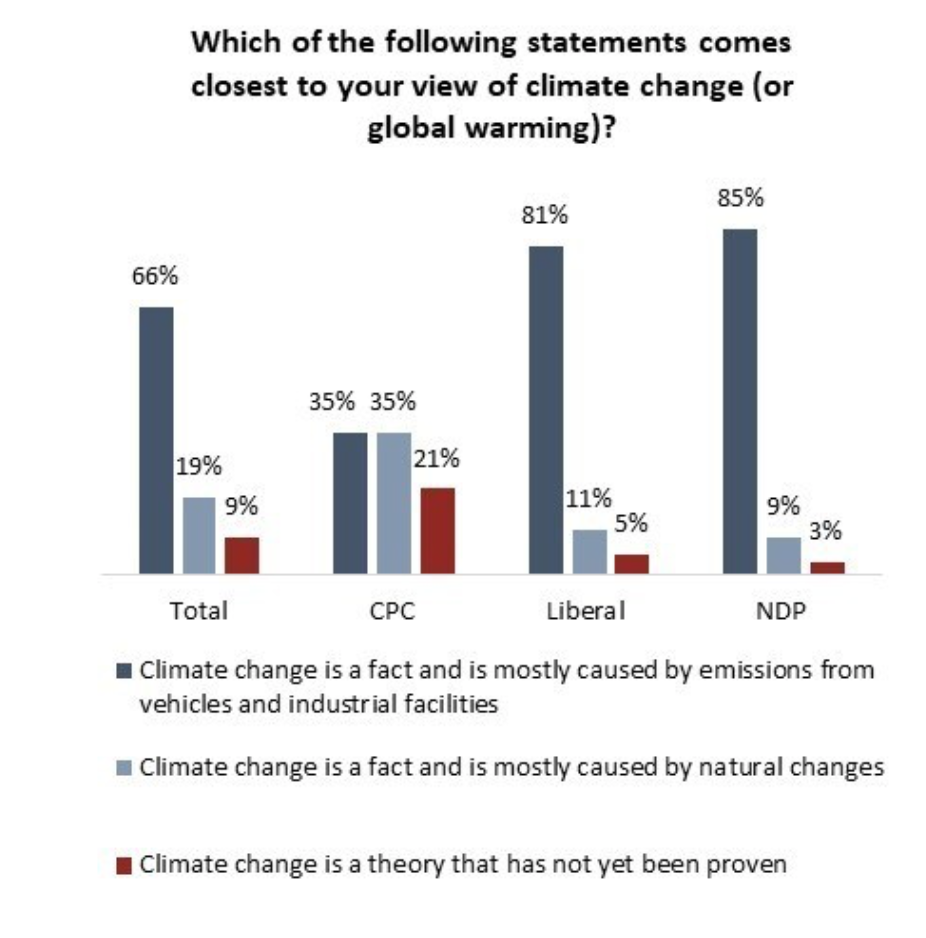
(3) The hidden cost of oil beyond the carbon footprint – that of orphan wells. The costs could rise to $70 billion and no oil company can be held responsible for the damage left behind. Here’s what Jason Kenny and the UCP propose as a solution:
“Streamline the process for well and facility abandonment and environmental reclamation to reduce costs and increase the rate at which wells that will not be used again are officially “abandoned.” Work jointly with the AER and industry to overhaul the liability management framework in Alberta, ensuring liabilities are covered without unduly discouraging new investment.
Propose that the federal government provide tax incentives and financial support such as “green” flow-through shares for the abandonment and environmental reclamation of oil and gas wells and associated surface facilities. Urge the federal government to establish alternative financial vehicles that focus on environmental reclamation in the oil and gas industry, such as adapting Qualifying Environmental Trusts (QET) to include well-decommissioning costs.” (Link here to the full story)
More recently the UCP has made several proposals to reform the Alberta Energy Regulator in a manner that will certainly make the Board of that body more responsive to the interests of the oil and gas industry rather than the people of the province. (link here to UCP outline)
(4) Oil revenue in Norway vs Alberta
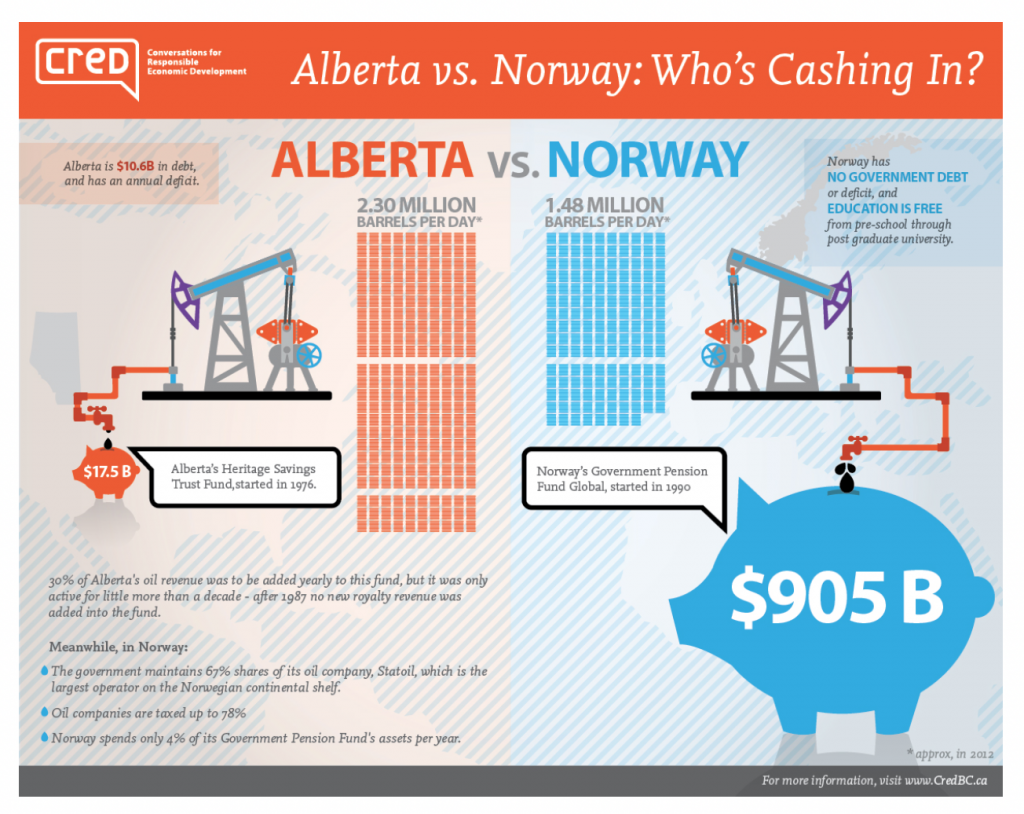
October 7, 2019. Several news reports today that Norway’s Global Pension Fund is making a full exit from the oil sands by removing four Canadian energy names from its investment list. (CTV News)
For the full outline: What Canada and Alberta could learn from Norway
(5) Thinking about the Norway example (4), it’s troubling that in Canada governments have given natural resource extractors exclusive ownership of the resource on which they lay claim and then develop. In fact, those resources belong to every Canadian, not just to the companies that develop the resource even though the provinces have been given nearly exclusive control over the resources within their boundaries.
Over the decades we have watched as companies extracted the value with little or no concern for the future, then abandoned the resource to be cleaned up on the public tab. This has happened with oil wells (orphaned wells), clear cut mountainsides, open-pit mines, and overfishing, to provide just a few examples.
While the provinces and feds received taxes, those taxes were just a small portion of the value of the resource when the costs of reclamation were added back in during the present day.
Appendix A Thumbnail Sketch of Political Parties
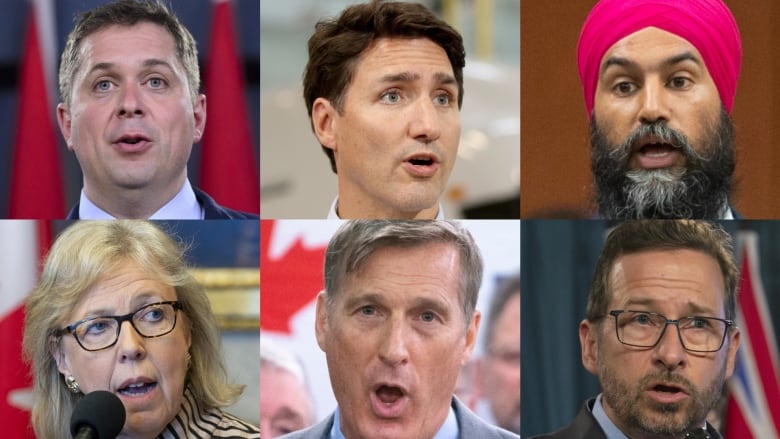
The faces of the six party leaders vying for your vote.
While all political parties change over time, certain core values tend to define them over the longterm. They may even change names, but that does not change the core values. The following list includes parties whose members are seeking a seat in the coming Federal Election. The numbers in brackets reflect current support they have as an aggregate of ten leading polls (October 2, 2019).
Parties of the Right
1. Conservatives (34.4%)
Andrew Scheer Leader
From back in early 1900s the Conservative Party both Federally and Provincially have re-configured themselves dozens of times under different names. The push to reconfigure “back to basics” was always strong. As a result, the party has always kept one foot in the past in a manner that prevented Canada from moving forward on important social issues such as legalization of same-sex marriage, abortion, LGBTQ rights, legalization of drugs, right to die, and the list goes on.
“The Conservative Party of Canada is the result of a merger of two previous right-wing parties in Canada. In one sentence, I would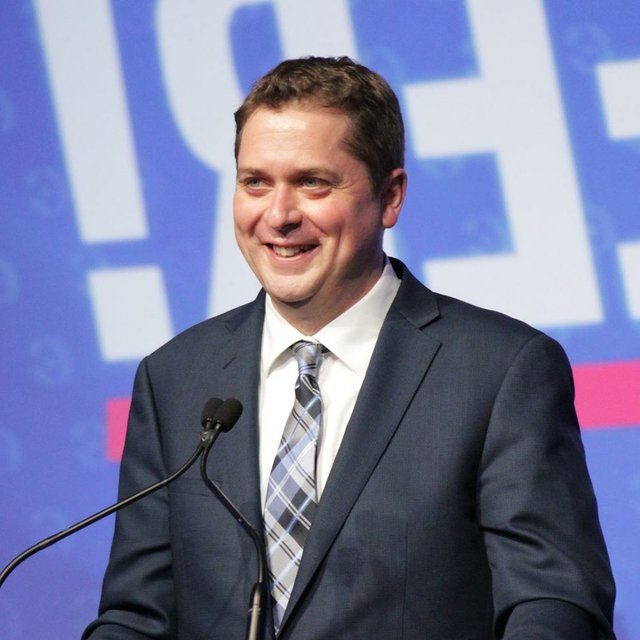
describe them as viewing themselves as stewards of economic, foreign
policy and social stability. The Conservative party tends to stand on the fiscal right, for lowering taxes and for generally allowing companies more free reign to operate in Canada.
They traditionally embrace the oil industry and view it as an economic engine to provide jobs to Canadians. They also view free trade as a priority, and the overwhelming majority of free trade deals have been enacted during periods of conservative power. The Conservatives tend not to deny climate change (with exceptions), however, they do not place any special emphasis or requirement for decisive action on that file.
They often embrace a view of a more secure state, acting to empower law enforcement and having strong rhetoric of defending Canada’s place in the world and its sovereignty. On most social issues, there has been a general tack to the left, both to appeal to voters and in understanding their hands are tied by the courts.
Many individuals do still identify as social conservatives with regard to family issues. One can’t use this description to predict every decision that is made, there are always exceptions, such as the giant stimulus package in the recession, or state involvement in bailing out GM.
2. Peoples Party of Canada (2.6%)
Maxime Bernier
The People’s Party of Canada was formed after Maxime Bernier losing the leadership race for the Conservatives. Bernier says his party is “inclusive,” but that does not square with its calls to scrap the country’s Multiculturalism Act, 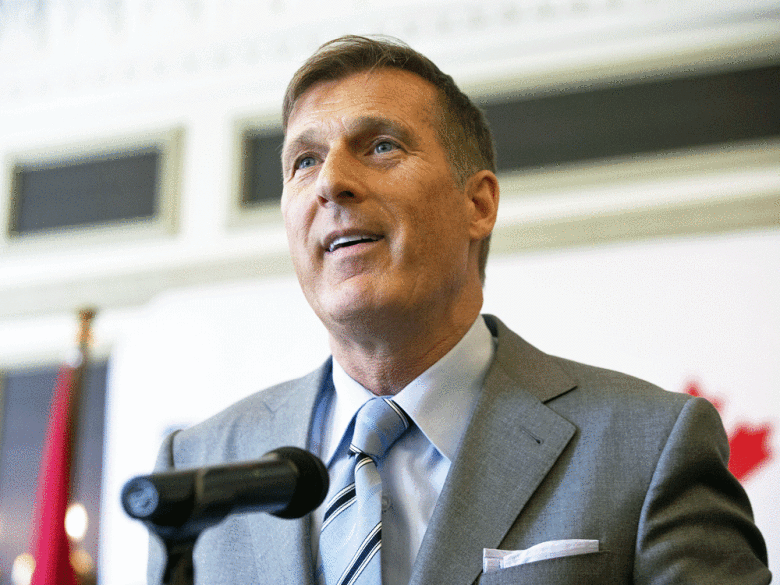 tighten our borders, promote “Western civilization values” and cut immigration by more than half?
tighten our borders, promote “Western civilization values” and cut immigration by more than half?
More diversity will “destroy what has made us a great country,” leader Maxime Bernier tweeted last year in a long, Trumpian thread. Bernier, who narrowly lost the Conservative leadership to Andrew Scheer in 2017, founded the People’s Party in September 2018.
Since then, it has alarmed critics across the political spectrum, including some former supporters who are worried that xenophobic, and even racist, members of the radical right, as seen in the U.S. and Europe, now have a political home in Canada.
3. The Bloc Québécois (BQ) (4.9%)
Yves-François Blanchet
The Bloc is a federal political party in Canada devoted to Quebec nationalism and the promotion of Quebec sovereignty. The Bloc was 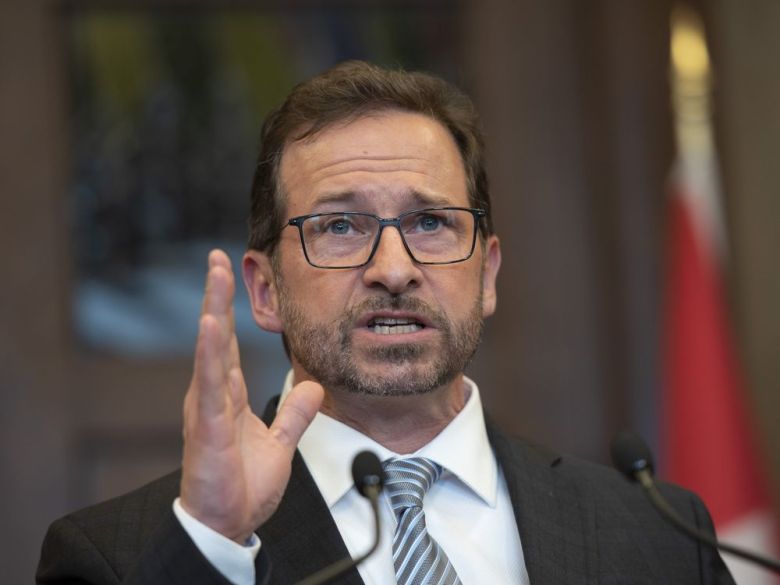 formed by Members of Parliament who defected from the federal Progressive Conservative Party and Liberal Party during the collapse of the Meech Lake Accord. Founder Lucien Bouchard was a cabinet minister in the federal Progressive Conservative government of Brian Mulroney.
formed by Members of Parliament who defected from the federal Progressive Conservative Party and Liberal Party during the collapse of the Meech Lake Accord. Founder Lucien Bouchard was a cabinet minister in the federal Progressive Conservative government of Brian Mulroney.
The party seeks to create the conditions necessary for the political secession of Quebec from Canada and campaigns actively only within the province during federal elections. The party has been described as social-democratic and separatist (aka “sovereigntist”).
The Bloc was the largest party in Quebec, and either the second or third-largest party in the House of Commons, for seven straight federal elections, from the 1993 election until 2011. The 2011 election saw the party win just four seats and lose official party status after a wave of support for the New Democratic Party. By 2014 the party had been reduced to two seats because of resignations and expulsions. In the 2015 federal election, the Bloc won 10 seats in the House of Commons, even though the party’s leader Gilles Duceppe failed to win a seat.
The Bloc has strong informal ties to the Parti Québécois (PQ, whose members are known as Péquistes), a provincial party that advocates for the secession of Quebec from Canada and its independence, but the two are not linked organizationally. As with its provincial counterpart, the Bloc Québécois has been supported by a wide range of voters in Quebec, from sections of organized labour to more conservative rural voters. Members and supporters are known in French as Bloquistes.
Parties of the Left
4. Liberals (33.4%)
Justin Trudeau
The Liberals have generally been at the forefront of pushing forward items that benefit the majority of Canadians in terms of social issues: Repatriation the Constitution and developing the Charter of Rights have been cornerstones. Along the way, all those things opposed by Conservatives involving social issues have been taken up by the Liberals who have always proceeded forward under one brand name.
The Liberal Party of Canada (Parti libéral du Canada) is the 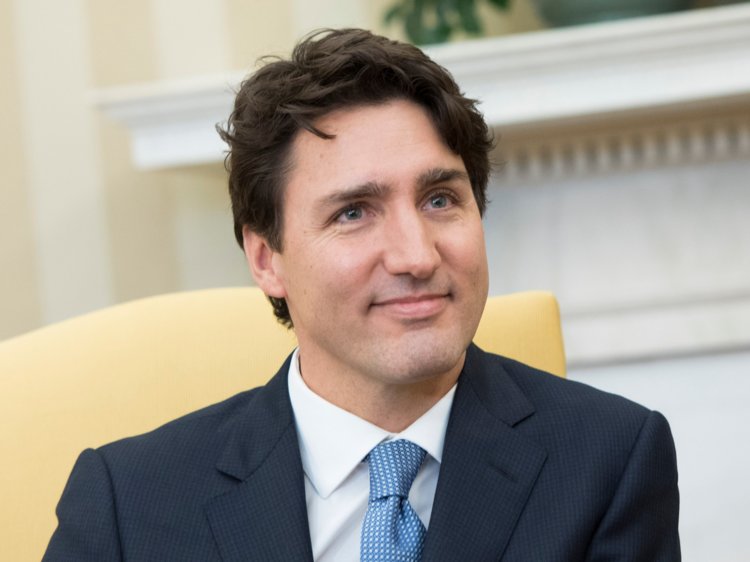 oldest and longest-serving political party in Canada. The party has dominated federal politics for much of Canada’s history, holding power for almost 69 years in the 20th century—more than any other party in a developed country—and as a result, it is sometimes referred to as Canada’s “natural governing party”.
oldest and longest-serving political party in Canada. The party has dominated federal politics for much of Canada’s history, holding power for almost 69 years in the 20th century—more than any other party in a developed country—and as a result, it is sometimes referred to as Canada’s “natural governing party”.
The party espouses the principles of liberalism, and generally sits at the cente to center-left of the Canadian political spectrum, with the Conservative Party positioned to the center-right and the New Democratic Party (who at times aligned itself with the Liberals during minority governments), occupying the left. Like their federal Conservative Party rivals, the party is often described as a “big tent”, attracting support from a broad spectrum of voters. In the late 1970s, Prime Minister Pierre Elliott Trudeau claimed that his Liberal Party adhered to the “radical centre“.
The Liberals’ signature policies and legislative decisions include universal health care, the Canada Pension Plan, Canada Student Loans, peacekeeping, multilateralism, official bilingualism, official multiculturalism, patriating the Canadian constitution and the entrenchment of Canada’s Charter of Rights and Freedoms, the Clarity Act, legalizing same-sex marriage, euthanasia, and cannabis, national carbon pricing, and reproductive choice.
In the 2015 federal election, the Liberal Party under Justin Trudeau had its best result since the 2000 election, winning 39.5 percent of the popular vote and 184 seats, gaining a majority of seats in the House of Commons.
The Federal Liberals have kept the name intact over the entire period they have been in and out of power in Canada.
A Note on the BC Liberals
The only place where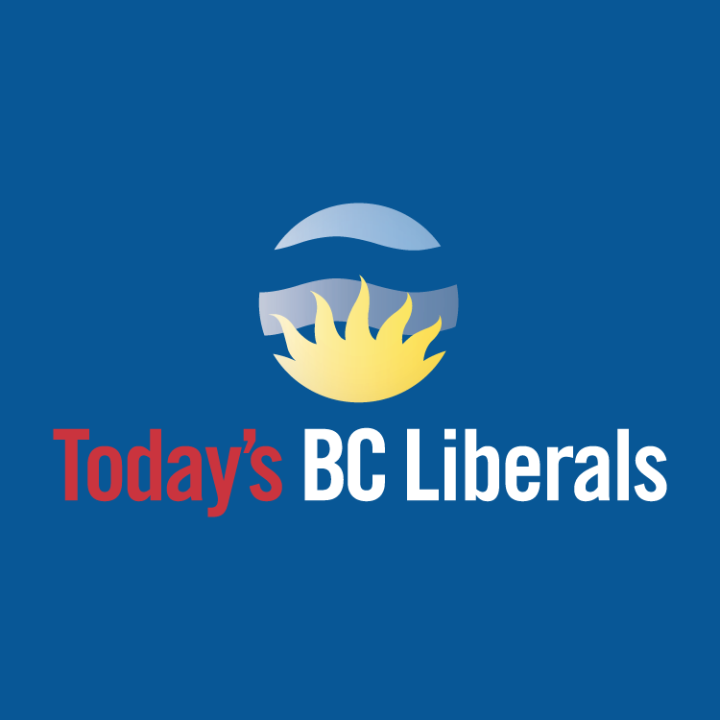 the Liberal name is generally misused is in British Columbia where, after several iterations of Social Credit (and others) the BC Liberals emerged as the center-right party.
the Liberal name is generally misused is in British Columbia where, after several iterations of Social Credit (and others) the BC Liberals emerged as the center-right party.
To distinguish themselves from the Federal Liberals they adopted the name BC Liberals and blue as their primary colour. To maintain the illusion of holding on to the centre they’ve always maintained a bit of red in their branding.
5. New Democrats
Jagmeet Singh (13.9%)
The New Democratic Party was a traditionally socialist rural party, 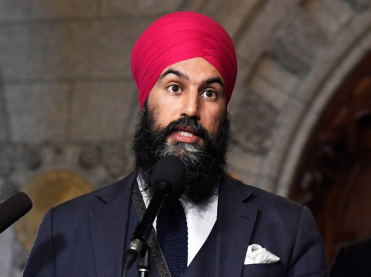 the CCF, but came to embody larger labour sentiment; the CCF and CLC worked together to create a new party to replace the CCF – initially called the New Party and then New Democratic Party
the CCF, but came to embody larger labour sentiment; the CCF and CLC worked together to create a new party to replace the CCF – initially called the New Party and then New Democratic Party
It has since played up its working-class appeal, support for labour policies, and trying to bring a new voice to government. They tend to take left-leaning social policies and taking up more fringe issues. They’ve traditionally been more closely associated with First Nations than other parties.
They additionally have taken a strong stand with their Sherbrooke Declaration that only 50%+1 voters are needed for Quebec to secede. They have recently taken an even stronger stand on the environment with the Leap Manifesto. I personally find the NDP to be a large patchwork quilt of different beliefs and policies that are across the entire spectrum of policy areas in Canada.
In general, they see themselves as a new voice that seeks to serve the populous above and beyond that of the business community, though that has been changing. Further, they see themselves as a principled party that sometimes breaks with pragmatic politics to take principled stands.
6. The Green Party (10.1%)
Elizabeth May
The Green Party of Canada, also known as the GPC, is a minor
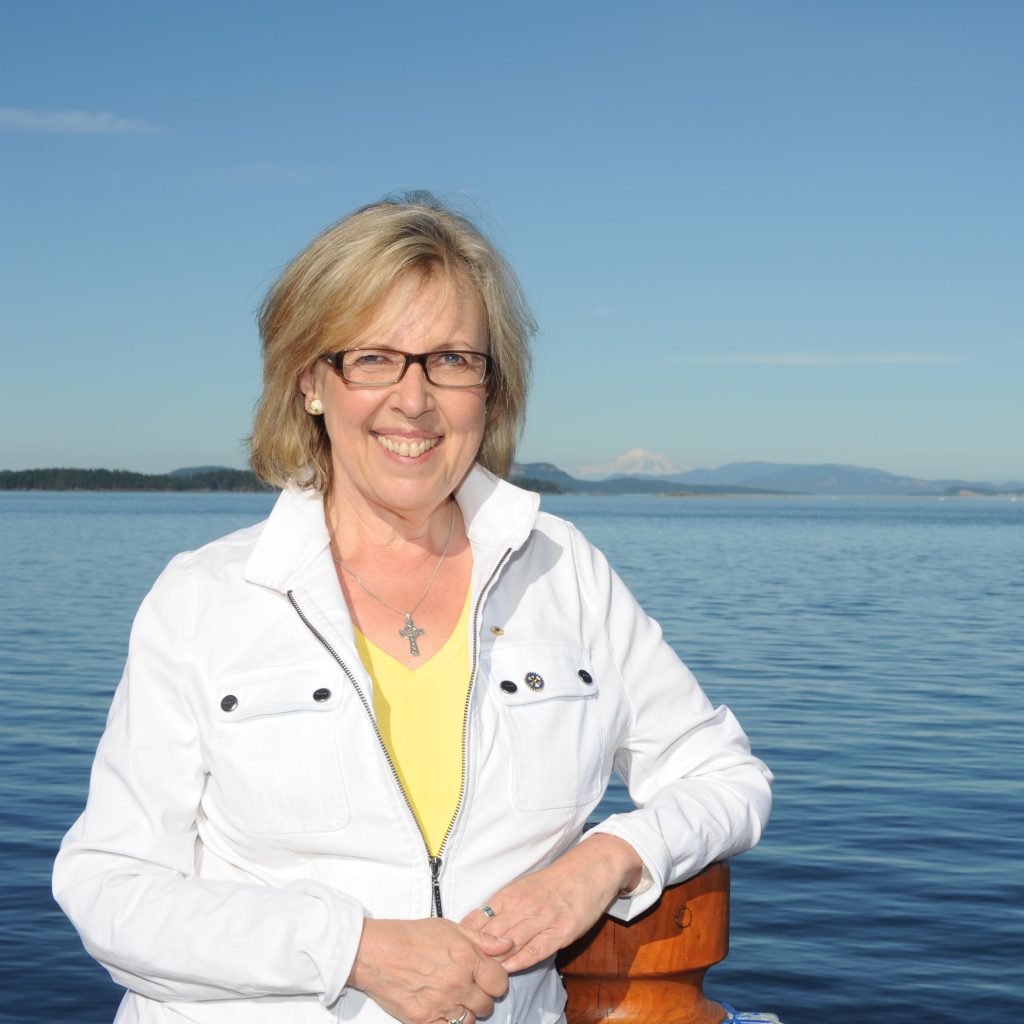 Canadian federal political party that is known for preaching ecological wisdom. Founded in November of 1983 in Ottawa, GPC currently holds one seat in the House of Commons. GPC was highly motivated by observing the West German Green Party, which overcome great odds to win 27 parliamentary seats.
Canadian federal political party that is known for preaching ecological wisdom. Founded in November of 1983 in Ottawa, GPC currently holds one seat in the House of Commons. GPC was highly motivated by observing the West German Green Party, which overcome great odds to win 27 parliamentary seats.
Over the past several years, GPC has made remarkable strides to advance its political platform and gain a voice in the House of Commons. In 2000, GPC received only 0.8% of the votes and received zero seats in the House. However, GPC heavily improved in the 2004 federal election, winning 4.3% of the votes.
After this “electoral breakthrough,” GPC earned a great deal of respect and garnered attention in the mass media. More importantly, by receiving 4.3% of the votes, GPC qualified for federal funding. By doing so, GPC received much-needed subsidies that would eventually play a huge role in its emergence in Canadian politics. Four years later in the 2008 federal election, GPC received 6.8% of the votes to ensure that green issues would be discussed in policy agendas of the Canadian government. As they enter this election they have two MPs in Ottawa.
On the Canadian political spectrum, GPC is in the center but shares many principles and policies with the Liberal party. This classification challenges common belief surrounding the Greens, which typically places them on the left due to their environmental values and support of regressive taxation.
A few words on First Past the Post
While First Past the Post continues to prevail, we still have a number of choices. At one time I thought Pro Rep would be a better system but after considerable reading and discussions with individuals from countries with PR, I have changed my mind. I now prefer the FPTP and sometime soon shall sit down and try to explain my reasoning.
As a teaser, when you look at the above collection of faces and the ideas they represent, just think what it would be like if we added another four to six and then dumped them into Ottawa? Don’t you think it better to have them hash out their differences before an election rather than after?
(284)
Trackback from your site.
